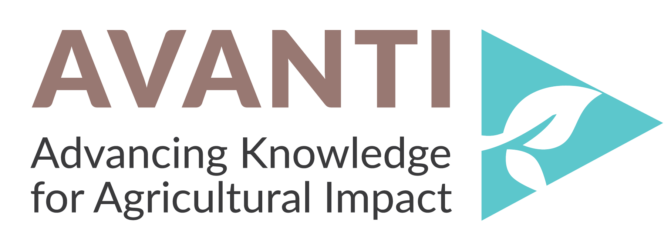Lessons Learned Series Number 2 / PDF VERSION
5 reasons why the AG-Scan approach can contribute to localising the SDGs
Experiences from AVANTI AG-Scans
April 2020, by AVANTI Team
The AVANTI AG-Scan approach aims to help strengthen the ability of national governments to effectively engage in results-based management (RBM). It starts by creating the conditions for a meaningful self-assessment by governments and other key players around monitoring, reporting and acting in support of Agenda 2030’s Sustainable Development Goals (SDGs) in the agricultural and rural development sector. It is driven by the belief that localising the SDGs requires effective RBM. RBM, in turn, requires a collaborative culture to work, so there is an emphasis on ensuring a variety of actors engaged in rural development at the national level are involved in the AG-Scan, and the AG-Scan is conducted in a participatory way.
So far, AG-Scans have been well received across the board by participating governments. Let’s have a closer look at why this might be so…
What is an AG-Scan? The AG-Scan is a structured, facilitated process that enables government and other stakeholders to analyse the status of their capacities regarding RBM (results and M&E activities) in the agriculture and rural development sectors, including a plan to close gaps and improve performance. AG-Scans are the core of the AVANTI initiative, which aims to strengthen national governments’ abilities to report against the Sustainable Development Goals through monitoring, evaluation and learning in an enabling knowledge environment, and in support of evidence- based decision making.
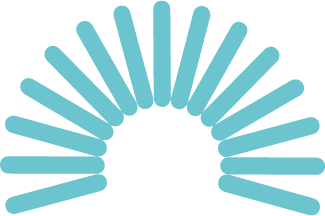
Reason 1: Because the methodology is robust yet adaptable
The AG-Scan process consists of five pillars, each representing an area of self-assessment (Leadership, Evaluation & Monitoring, Accountability & Partners, Planning & Budgeting, and Statistics – LEAPS).1 For each pillar, AG-Scan participants rate their situation from simply being aware of the pillar’s importance to full implementation of policies and practices in support of it. While this takes some time, the methodology itself is not complicated. It is rigorous, standardised and applied in all the AG-Scan countries.
However, before the actual analysis, the AG-Scan process is adapted to each national context to reflect country-specific development priorities, strategies and national policies. In addition, as terminology is used and understood differently in different contexts, the process is adapted and translated with appropriate wording. So, each country has a customised tool that is easily accessible and understandable for the participants.


Reason 2: Because diverse stakeholders engage in dialogue and share knowledge
The AG-Scan process brings different stakeholders together and opens doors across ministries, connecting people who may not normally have space for deeper exchange. For example, in Samoa, the AG-Scan not only brought representatives of four ministries and numerous departments together, it also included representation from various international organisations and the Samoan Federated Farmers organisation. This aspect of the exercise was also highlighted explicitly as an area of added value by AG- Scan participants in Lesotho, Peru and Tunisia.2
Government officials who may be used to working more independently can establish new, or strengthen existing, communication lines: a participant in the Tunisia AG-Scan emphasised that the workshop was “like a therapy” for her, as she was able to effectively communicate the priorities of her unit while learning about the priorities of others and how to synchronise them.
Participation of civil society and the private sector is also encouraged in order to collect diverse views on the state of RBM more broadly. Such inclusive processes, where a variety of perspectives are involved, may be more time-consuming, but they make an important contribution to sustainability. It is only through coordinated action among a variety of actors that the SDGs can be achieved.
This does not mean that all AG-Scans take place in highly collaborative environments. Structural or other contextual factors can present significant challenges to open exchange (hierarchies within departments or ministries, competing agendas among different actors, etc). We strive to overcome these challenges by engaging with key rural development actors in each country, to sensitise them to the potential benefits before AG-Scans, by relying on the transformative nature of the methodology, and by supporting champions to take action plans forward into the future.
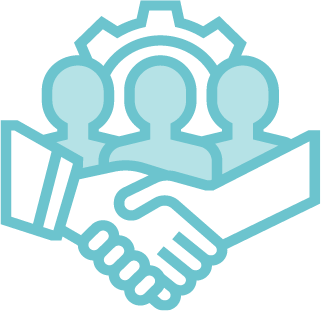
Reason 3: Because it draws attention to the need for collaborative action
In the AG-Scan process, participants reflect on their own situation against the five LEAPS pillars, their attention is drawn to the fact that narrow institutional interests are not enough to effectively understand, plan and take action to improve their capacities to respond to SDG challenges. They become more fully aware that collaboration among a multiplicity of actors is a necessary part of moving forward. Stimulating such collaboration can be difficult when institutional structures are more suited to silo-like ways of working, but building awareness is an important first step that AVANTI can contribute to.
This reinforces the importance of AG-Scan implementing teams’ efforts to promote the engagement of a range of key actors at the national level to work together to make action plans that come out of AG-Scan self-assessment a reality.
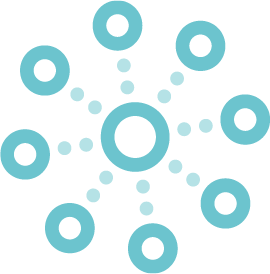
Reason 4: Because the process is transparent and participatory
The AG-Scan process and the way it is applied are fundamentally participatory and thereby introduce an element of transparency among those who are engaged. The experience and opinions brought in by participants actively shape the outcomes of the process. Participants contribute with examples from their own work then rate, discuss and prioritise the areas that need further attention, as well as those that are working well. This kind of approach generates a strong sense of ownership as shared decision making leads to greater engagement in the AG-Scan. This can translate into greater institutional ownership as well, which is essential for effective follow-up and translation of the assessment and initial action plan into reality.
Of course, pre-existing institutional rivalries or areas where responsibility is not well-defined3 can create barriers to follow-up, but we believe that the AG-Scan process opens the door to greater collaboration through the concrete experience the self-assessment provides. This can act as a catalyst for the identification and breaking down of barriers, as people who may not have understood each other’s perspectives gain better insight by talking things through.
The AG-Scan workshops are facilitated by Helvetas and Itad, whose facilitators have thematic expertise but are mainly selected for their excellence in participatory methods and facilitation skills. They have the skills to create and maintain a productive working environment by building confidence and trust among participants, listening and motivating people, supporting communication across hierarchies, and ensuring energy levels are maintained. Participatory facilitation skills are essential in motivating people to contribute with their experiences.
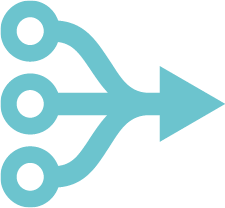
Reason 5: Because it translates the commitments into concrete actions
The process is a way to help participants reflect on key questions, but it is not a prescription for action itself. The motivation and action of the participants using the self-assessment lead to a prioritised set of areas contained in the AG-Scan action plan. In addition to prioritisation, the self-assessment can be a catalyst for reinforcing collaboration across ministries or conducting the same workshop at the national level with other sectors or at the sub-national level.4
The action planning process takes place immediately after the initial self-assessment with a smaller group working to refine the most relevant findings and help to ensure targeted follow-up. This is a crucial element of the AG-Scan process, as the self-assessment is not intended to be a purely intellectual exercise, but it should point to tangible activities that can be taken up in pursuit of strengthening RBM capacities. It is too early in our experiences with AG-Scans to know how effective the follow-up will be to the action plans, but the move from more output and expenditure-oriented planning and monitoring to one that supports RBM requires a combination of strong capacities across the LEAPS pillars as well as commitment (initially from senior leaders, but also from other levels) in order to be sustainable.
AG-Scans in action in Boivia (left) and Samoa (right). Image: AVANTI
Does all of this suggest that AG-Scans are effective in improving RBM?
Although the AG-Scan methodology covers a wide range of topics (from overall leadership to technical capacities, from accountability to key stakeholders), once an AG-Scan is operationalised, it enables stakeholders to start dialogues across teams, institutions and even countries to identify and prepare for appropriate changes to improve RBM. The stimulus for deeper dialogue outside the day-to-day operational realities of work – and involving a range of key stakeholders – is a major feature of the added value of AG- Scans for those who undertake them.
Nevertheless, we need to bear in mind that the AG-Scan is a short-term initiative that needs to be complemented by longer-term efforts.5 For example, champions are needed to carry the action plans forward. AVANTI has stepped up its efforts to support action plan refinement and broker linkages with key external actors such as donors and other development agencies to enable such follow-up. In addition, the AVANTI team produces key learnings and knowledge products that are shared with the wider development community and with countries yet to do AG-Scans.
The AVANTI Initiative aims to hold up to 20 AG-Scans before the end of 2020 – we hope the learning from all of these experiences will contribute to improving global capacity in RBM and ultimately agricultural and rural development programming.
Recommended Literature
- The AG-Scan tool is an adaptation for the agriculture and rural development sector of the non-sector-specific CAP-Scan tool created in the early 2000s under the auspices of the OECD/DAC.
- For further details, see http://www.avantiagriculture.org/ag-scan-workshops/
- AG-Scan facilitators noted various instances in different countries where data gathering and/or management was done in different and sometimes overlapping ways in different ministries and bureaus of statistics, for example. Such situations make collaboration and coordination more challenging.
- Although it is difficult to say how much this will happen, following the AG-Scan in Peru other ministries in addition to MINAGRI have asked for further details on the methodology and are exploring its use in their contexts.
- It is also inherently challenging to feed monitoring into planning in the agricultural sector due to challenges in measurability, which is partly due to a range of factors affecting production levels (e.g. climate change, market forces) and difficulties associated with gathering accurate data in a sector with a large number of smallholders (see Janus and Holzapfel, ‘Introducing results-based Approaches in Agriculture: Challenges and Lessons Learnt’, Briefing Paper 2/2017, German Development Institute).
